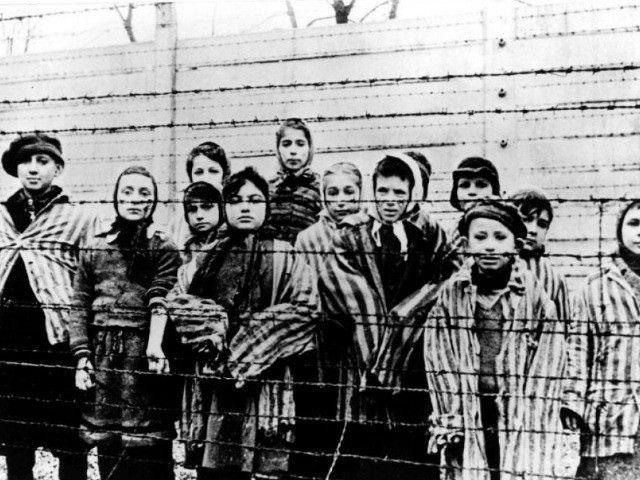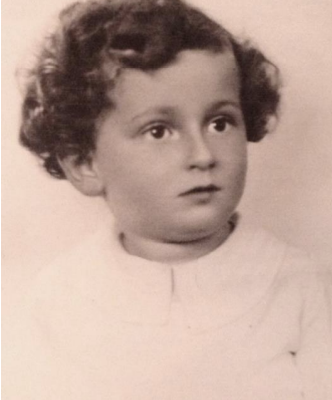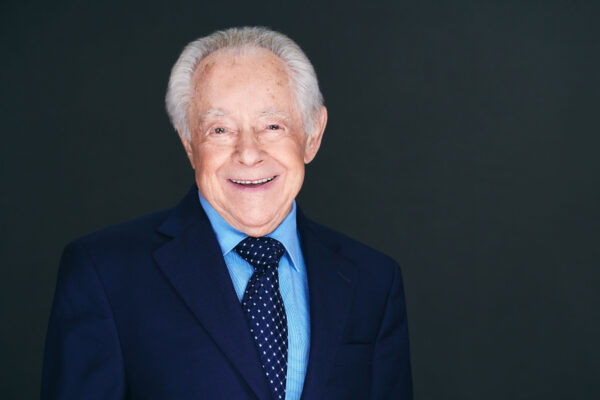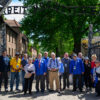
(AP) TEL AVIV, Israel — Seventy years after the most daring attempt of Jewish Holocaust survivors to seek revenge, the leader of the plot has only one simple regret — that to his knowledge, he didn’t actually kill any Nazis.
Joseph Harmatz is one of the few remaining Jewish “Avengers” who carried out a mass poisoning of former SS men in an American prisoner-of-war camp in 1946 that sickened more than 2,200 Germans but ultimately caused no known deaths. A recently declassified US military report obtained by the Associated Press has only added to the mystery of why the brazen operation did not kill Nazis, because it shows the amount of arsenic used should have been fatal to tens of thousands.
Still, the 91-year-old Harmatz says the message echoed into a rallying cry for the newborn state of Israel — that the days when attacks on Jews went unanswered were over.
“We didn’t want to come back (to pre-state Israel) without having done something, and that is why we were keen,” Harmatz said in a hoarse, whispery voice from his apartment in north Tel Aviv. He lost most of his family in the Holocaust.
Despite a visceral desire for vengeance after World War II, most Holocaust survivors were too weary or devastated to seriously consider it. But a group of some 50, most young men and women who had already fought in the resistance, could not let the crimes go unpunished. While there were some isolated acts of Jews harming individual Nazis after the war, the group, code-named Nakam, Hebrew for vengeance, sought a more comprehensive form of punishment.
The mission was simple.
“Kill Germans,” Harmatz said flatly.
How many?
“As many as possible,” he quickly replied.
The first idea described by Harmatz was initiated by the resistance fighter and Israeli poet Abba Kovner: to poison the water supply of Nuremberg. But there were deep reservations even among the Avengers that such an operation would bring mass death to innocent Germans and undermine international support for Israel. Either way, when Kovner sailed for Europe with the poison, he drew suspicion from British authorities and was forced to toss it overboard.
So attention shifted toward Plan B, a more limited operation that specifically targeted the worst Nazi perpetrators.
Undercover members of the group found work at a bakery that supplied the Stalag 13 POW camp at Langwasser, near Nuremberg. On April 13, 1946, using poison procured from one of Kovner’s associates, three members spent two hours coating some 3,000 loaves of bread with arsenic. The goal was to kill 12,000 SS personnel, and Harmatz oversaw the operation from outside the bakery.
“The terrible tragedy was about to be forgotten, and if you don’t punish for one crime, you will get another,” explained Dina Porat, the chief historian at Israel’s Yad Vashem memorial, who is about to publish a book on the Avengers. “This is what was driving them, not only justice but a warning, a warning to the world that you cannot hurt Jews in such a manner and get away with it.”
Under German regulations, authorities in Nuremberg later investigated Harmatz and Leipke Distal, who worked undercover in the bakery for months, after they revealed details of the operation in a 1999 television documentary. The prosecutors eventually concluded that even though there was an attempted murder, they would not file charges because of the “extraordinary circumstances.”
According to previously classified files from the US military’s Counter Intelligence Corps, the amount of arsenic used should have been enough to cause a massive number of deaths. The files were obtained by the AP through a Freedom of Information Act request to the National Archives.
In one memo from 1947 stamped “confidential,” investigators write that at the bakery they found “three empty hot water bottles and a burlap bag containing four full hot water bottles.” An analysis of the contents “revealed that they contained enough arsenic mixed with glue and water to kill approximately 60,000 persons.”
Another confidential report said a chemist called in to help in the investigation had determined “10 kilo of pure arsenic was present, mixed with water and glue for adhesive purposes.”
Laboratory investigators found arsenic on the bottom, top and sides of the bread, and reported that doctors said the SS men exhibited symptoms “similar to cholera and included vomiting, diarrhea and skin rashes.” The report added that the most amount of arsenic found on a loaf was 0.2 grams — which fell well within the range of 0.1-0.3 grams that would be “in most cases lethal.”
To this day, it remains a mystery why the poison failed to kill Nazis. The prevailing theory is that the plotters in their haste spread the poison too thinly. Another is that the Nazi prisoners immediately sensed something was off with the bread and therefore no one ingested enough of it to die.
After the attack, Harmatz, Distal and others had to flee quickly. At the border of Czechoslovakia, they were met by Yehuda Maimon, an Auschwitz survivor from Poland who lost his parents in the camps. He smuggled the group out safely, and they ended up in the Holy Land.
From a retirement home outside Tel Aviv, the 92-year-old Maimon looks back with satisfaction at carrying out his “duty” for revenge.
“It was imperative to form this group. If I am proud of something, it is that I belonged to this group,” he said. “Heaven forbid if after the war we had just gone back to the routine without thinking about paying those bastards back. It would have been awful not to respond to those animals.”
Originally Published HERE







